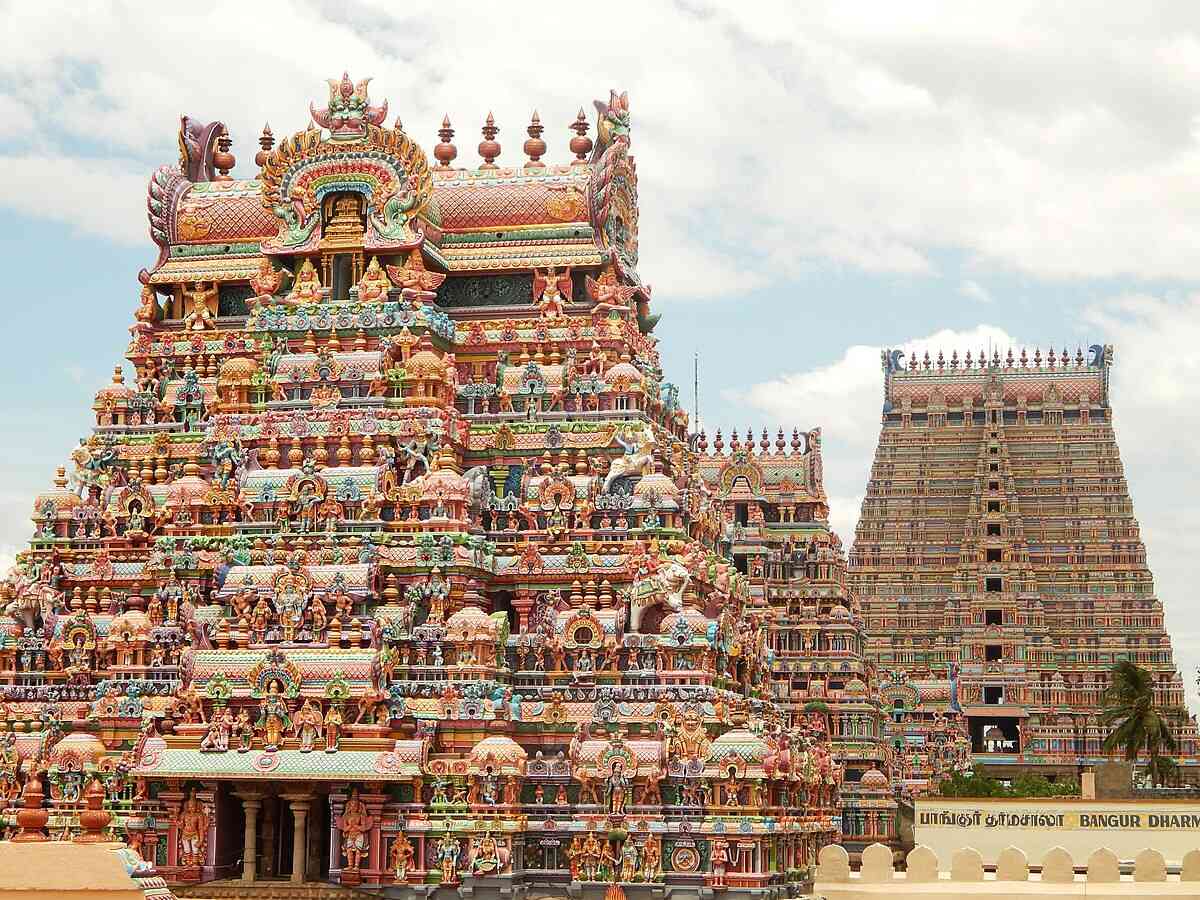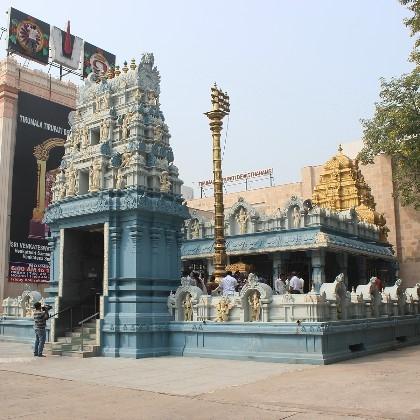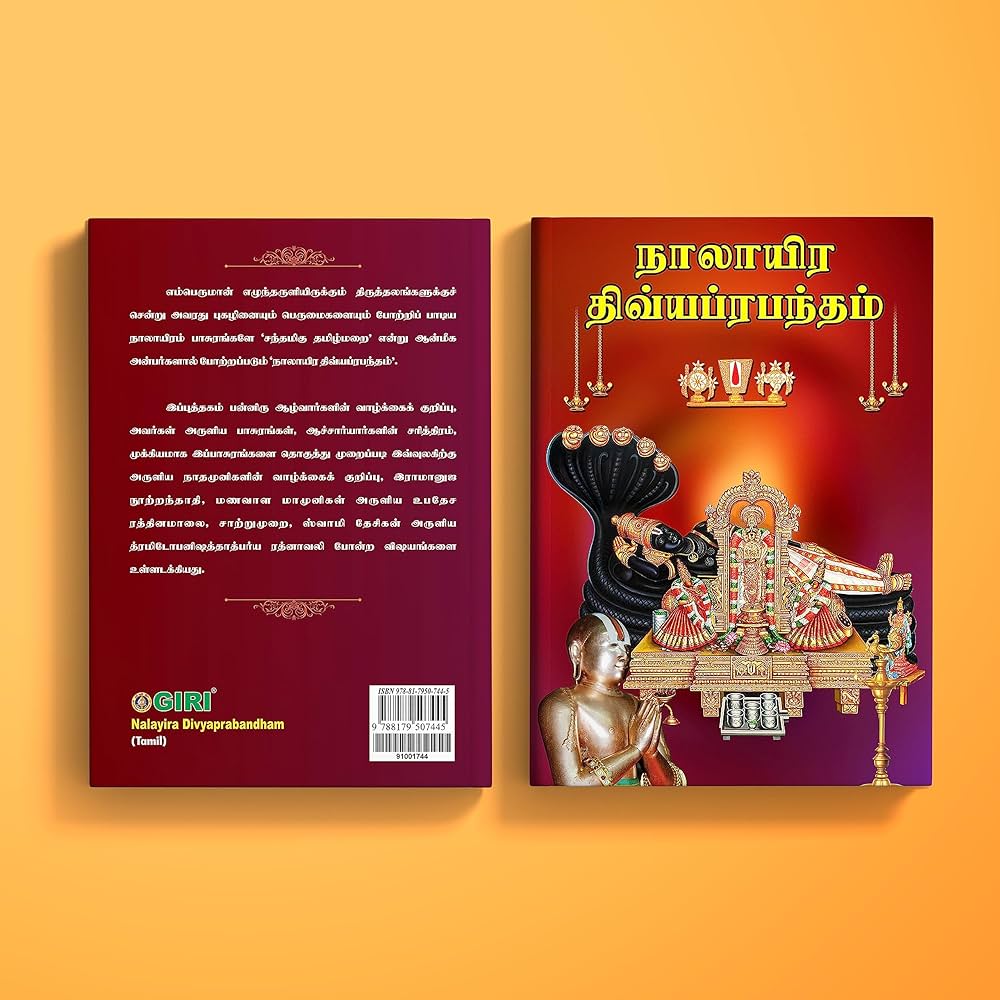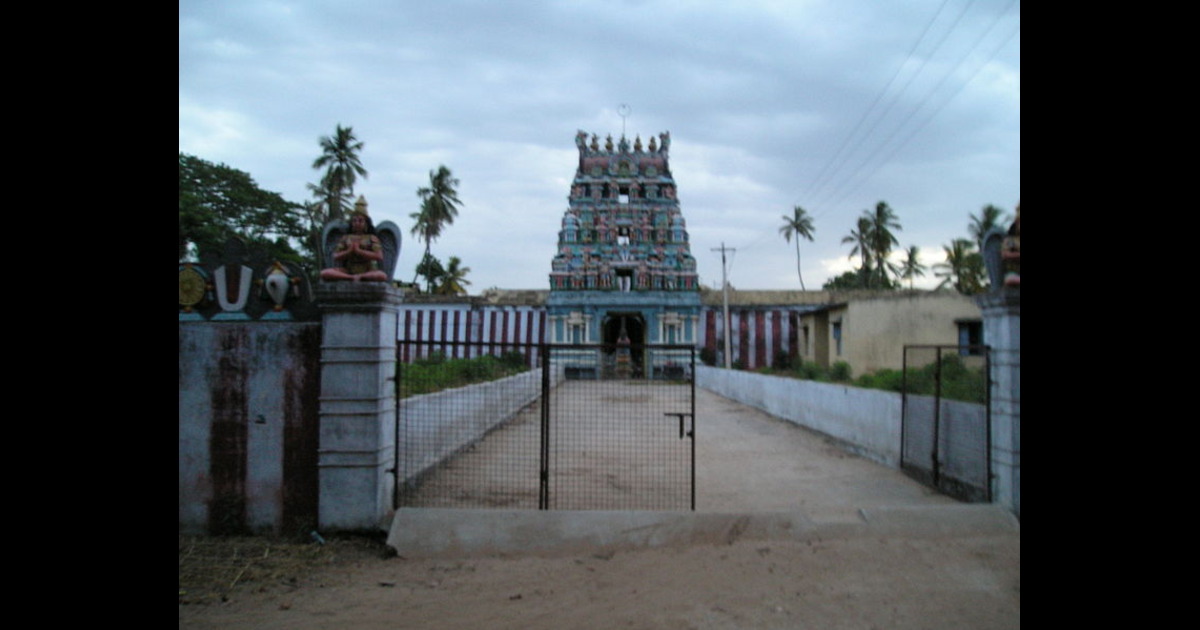India is a land of diverse cultures, traditions, and religions, each with its own unique set of beliefs and practices. Among these, Hinduism stands out with its rich tapestry of temples and sacred sites. One such significant set of temples is the 108 Divya Desam.
These temples are dedicated to Lord Vishnu and hold immense spiritual significance in Vaishnavism. The term ‘Divya Desam’ translates to ‘Divine Abode’.
These temples are celebrated in the hymns of the Azhwars, the Tamil saint poets of the 6th to 9th centuries AD.
In this blog post, we will explore the fascinating world of the 108 Divya Desam, their historical and spiritual significance, and the experiences of pilgrims who visit these sacred sites.
Historical Background
The origins of the Divya Desam date back to ancient times, deeply rooted in the Bhakti movement. The Azhwars played a crucial role in popularizing these temples through their devotional hymns known as the Nalayira Divya Prabandham.
These hymns are considered the Tamil equivalent of the Vedas, filled with divine love and adoration for Lord Vishnu.
The Azhwars, numbering twelve in total, traveled across the country, visiting these temples and composing hymns in praise of the deity residing there. Each temple is associated with specific Azhwars and their compositions, adding to its historical and religious significance.
Geographical Distribution
The 108 Divya Desam are spread across India and even beyond its borders. The majority of these temples are located in Tamil Nadu, the heartland of the Azhwars and their devotional movement.
However, Divya Desam can also be found in other states of India and even in countries like Nepal.
For a complete list of 108 Divya Disams read this blog.
Divya Desam in Tamil Nadu
Tamil Nadu houses 84 of the 108 Divya Desam. The state is known for its magnificent temple architecture, and these temples are no exception. Some of the prominent ones include:
- Srirangam: The largest functioning Hindu temple in the world, dedicated to Ranganatha Swamy.
- Tiruvallikeni: Known as Parthasarathy Temple in Chennai, famous for its association with the Mahabharata.
- Kanchipuram: Home to several Divya Desam, including Varadaraja Perumal Temple.
Divya Desam Outside Tamil Nadu
While Tamil Nadu boasts the highest number of Divya Desam, several other states in India also host these sacred sites:
- Andhra Pradesh: Tirupati, the abode of Lord Venkateswara, is perhaps the most famous Divya Desam outside Tamil Nadu.
- Kerala: The Ananthapura Lake Temple in Kasaragod and Thiruvananthapuram’s Padmanabhaswamy Temple are notable examples.
- Uttar Pradesh: The Varanasi Vishnu temple and Ayodhya are significant Divya Desams in the northern part of India.
Divya Desam in Other Countries
Interestingly, the Divya Desam also extend beyond India’s borders:
- Nepal: The Muktinath Temple in the Mustang district is revered as a Divya Desam, marking the spread of Vaishnavism beyond India.
Significance of 108 Divya Desam
The Divya Desams hold multifaceted significance, encompassing spiritual, architectural, and cultural dimensions.
Spiritual Significance
These temples are not merely places of worship but are considered the abodes of Vishnu himself. Each temple has a unique story and specific manifestation of the deity, offering a different aspect of Vishnu’s divine persona. Pilgrims believe that visiting all 108 Divya Desam will lead to moksha (liberation from the cycle of birth and death).

Architectural Significance
The architectural grandeur of these temples is a testament to the skill and devotion of ancient Indian craftsmen. From the towering gopurams (temple towers) to the intricate carvings and sculptures, each temple is a masterpiece of Dravidian architecture.
Cultural Significance
The Divya Desams are not only religious centers but also hubs of cultural activities. They have been the epicenters of festivals, classical music, and dance forms. The rich traditions associated with these temples have been passed down through generations, preserving a vibrant cultural heritage.
Famous Divya Desam
While all 108 Divya Desam are significant, some stand out due to their historical, spiritual, or architectural prominence.
Srirangam
Located in Tiruchirapalli, Tamil Nadu, Srirangam is often considered the most important of all Divya Desams. It is the largest functioning Hindu temple complex in the world and is dedicated to Ranganatha Swamy, a reclining form of Lord Vishnu. The temple’s annual festival, Vaikunta Ekadasi, attracts millions of devotees from all over the world.

Tirupati
Tirupati, in Andhra Pradesh, is home to the Venkateswara Temple, one of the most visited religious sites globally. The temple is famous for its grand celebrations of Brahmotsavam and the immense wealth offered by devotees.
Kanchipuram
Kanchipuram, known as the city of a thousand temples, is home to several Divya Desam. The Varadaraja Perumal Temple is one of the most revered here, known for its magnificent architecture and the annual Garuda Sevai festival.
Other Notable Temples
- Srivilliputhur Andal Temple: Famous for its association with Andal, the only female Azhwar.
- Thiruvananthapuram: Home to the Padmanabhaswamy Temple, known for its vast treasures and historical significance.
Legends and Stories
Each Divya Desam has its own set of legends and stories that add to its mystique and allure.
Srirangam
According to legend, the idol of Ranganatha Swamy in Srirangam was originally worshipped by Lord Rama in Ayodhya. It was gifted to Vibhishana, the brother of Ravana, but was eventually enshrined in Srirangam, making it a sacred site.
Tirupati
The legend of Tirupati revolves around Lord Vishnu incarnating as Venkateswara to save humanity from the trials of the Kali Yuga. The temple’s immense popularity is attributed to the deity’s reputation for granting wishes and answering prayers.
Kanchipuram
Kanchipuram’s Varadaraja Perumal Temple is associated with the legend of Vishnu appearing to grant the wishes of devotees who performed a specific ritual involving the dipping of a golden lizard in a temple tank.
Azhwars and Divya Prabandham
The Azhwars were instrumental in the propagation of the Divya Desams through their devotional hymns. The Nalayira Divya Prabandham, a collection of 4,000 Tamil verses, is considered the bedrock of Vaishnavism. Each hymn is a poetic expression of the Azhwars’ love and devotion towards Lord Vishnu.

Contribution of Azhwars
The Azhwars’ contributions are not just limited to their hymns. They played a pivotal role in reviving and rejuvenating temple worship and practices. Their works highlight the importance of devotion and the divine grace of Lord Vishnu.
Divya Prabandham and its Relevance
The Divya Prabandham continues to be recited in Vaishnavite temples and homes, reflecting the timeless appeal of these hymns. They provide a spiritual and emotional connection for devotees, bridging the gap between the mortal and the divine.
Pilgrimage Experience
Embarking on a pilgrimage to the Divya Desams is a profound spiritual journey. Here are some tips and insights to enhance the pilgrimage experience.
Travel Tips
- Planning: Due to the widespread locations of the Divya Desam, meticulous planning is required. It is advisable to group temples based on their geographical proximity.
- Accommodation: Many temples offer simple lodging facilities. However, for a more comfortable stay, booking hotels in advance is recommended.
- Guides: Hiring a knowledgeable guide can greatly enhance the experience by providing historical and mythological context.
Important Festivals and Events in 108 Divya Desam
The Divya Desam are vibrant centers of worship, cultural festivities, and community gatherings. Each temple hosts numerous festivals and events throughout the year, attracting devotees from all over the world. These festivals not only celebrate the divine but also bring to life the rich traditions and heritage of Vaishnavism. Here are some of the most important festivals and events associated with the Divya Desam:
Vaikunta Ekadasi
Date: Generally falls in December or January.
Significance: Vaikunta Ekadasi is one of the most significant festivals celebrated in many Divya Desams, particularly in the Srirangam and Tirupati temples. It is believed that on this day, the gate to Vaikunta (the celestial abode of Lord Vishnu) is open, allowing devotees to attain moksha.
Celebrations:
- Srirangam: The temple is beautifully decorated, and thousands of devotees gather to witness the grand procession of the deity through the Paramapada Vasal (gateway to Vaikunta).
- Tirupati: The Venkateswara Temple sees an influx of devotees. Special rituals and recitations of the Vishnu Sahasranama (1000 names of Vishnu) are performed.
Brahmotsavam
Date: Celebrated annually, with dates varying by temple.
Significance: Brahmotsavam is a grand festival believed to be initiated by Brahma, the creator god, to honor Lord Vishnu. This festival is particularly prominent in Tirupati and other major Divya Desams.
Celebrations:
- Tirupati: Spanning nine days, the festival includes daily processions of the deity in various Vahanas (vehicles) such as Garuda, Hanuman, and Gaja (elephant). The highlight is the Garuda Seva, where the deity is paraded on a Garuda Vahana, attracting lakhs of devotees.
- Kanchipuram: The Varadaraja Perumal Temple hosts an elaborate Brahmotsavam with similar grandeur and various Vahana processions.
Garuda Sevai
Date: Specific to each temple’s festival calendar.
Significance: Garuda Sevai is a spectacular event where the deity is paraded on a Garuda Vahana. It is particularly popular in Kanchipuram and Srivilliputhur.
Celebrations:
- Kanchipuram: During the Garuda Sevai, the deity Varadaraja Perumal is taken around the town on a majestic Garuda Vahana. The festival is marked by vibrant decorations, music, and dance.
- Srivilliputhur: The Andal Temple celebrates Garuda Sevai with great enthusiasm. Andal, the female saint poet and consort of Vishnu, is honored with special rituals and processions.
Panguni Uthiram
Date: Celebrated in March or April.
Significance: Panguni Uthiram is celebrated to mark the celestial weddings of various deities, including that of Lord Vishnu with his consorts. It is particularly important in Vaishnavite temples.
Celebrations:
- Srirangam: The temple hosts the grand wedding ceremony of Ranganatha Swamy and Ranganayaki Thayar. The rituals are elaborate, symbolizing the union of divine energies.
- Madurai: Although primarily a Shaivite city, the Koodal Azhagar Temple celebrates Panguni Uthiram with the divine wedding of Koodal Azhagar (Vishnu) and Sri Devi.
Chitra Pournami
Date: Celebrated on the full moon day of the Tamil month of Chithirai (April-May).
Significance: Chitra Pournami is a festival dedicated to Chitragupta, the celestial accountant who keeps track of human deeds. In Vaishnavite tradition, it is also associated with Lord Vishnu.
Celebrations:
- Thirukoshtiyur: The Sowmya Narayana Perumal Temple hosts special rituals and processions. Devotees believe that offering prayers on this day will absolve them of their sins.
- Tirupati: Special poojas and rituals are conducted, attracting a large number of devotees.
Andal Thirukkalyanam
Date: Celebrated during the Tamil month of Aadi (July-August).
Significance: This festival marks the divine wedding of Andal and Lord Ranganatha. Andal, one of the twelve Azhwars, is revered for her unwavering devotion to Vishnu.
Celebrations:
- Srivilliputhur: The Andal Temple is the epicenter of this festival. The temple celebrates Andal’s Thirukkalyanam (divine wedding) with grandeur, involving elaborate rituals and processions.
- Srirangam: Although Andal’s main shrine is in Srivilliputhur, Srirangam also celebrates her wedding with Lord Ranganatha with special poojas and festivities.
Aadi Brahmotsavam
Date: Celebrated in the Tamil month of Aadi (July-August).
Significance: This Brahmotsavam is specifically observed in many Tamil Nadu temples, marking the beginning of the auspicious month of Aadi.
Celebrations:
- Kanchipuram: The Varadaraja Perumal Temple witnesses grand festivities including daily processions, special abhishekams (ritual bathing), and Vahana processions.
- Tirunelveli: The Nambi Rayar Temple at Thirukkurungudi celebrates Aadi Brahmotsavam with great enthusiasm, involving various cultural performances and rituals.
Preservation and Challenges
Preserving the Divya Desams is crucial to maintaining their historical and spiritual legacy. However, there are several challenges in this endeavor.
Efforts to Preserve These Temples
- Government Initiatives: Various state and central government initiatives focus on the restoration and preservation of these ancient temples.
- NGO Efforts: Numerous non-governmental organizations work towards raising awareness and funds for the upkeep of these temples.
Challenges Faced by Divya Desams
- Environmental Degradation: Pollution and environmental changes pose a significant threat to these ancient structures.
- Urbanization: Rapid urbanization around these temples can lead to encroachment and loss of heritage.
- Funding and Resources: Many temples struggle with inadequate funding and resources for proper maintenance.
Conclusion
The 108 Divya Desam are not just temples; they are living testimonies to India’s rich cultural and spiritual heritage. Each temple, with its unique history, legends, and architectural beauty, offers a profound spiritual experience. Visiting these temples is not just about seeking blessings but also about connecting with the divine and understanding the deep-rooted traditions of Vaishnavism. Whether you are a devout pilgrim or a curious traveler, the journey to the Divya Desam is bound to be a transformative and enlightening experience.
References
- Books and Scriptures
- “Nalayira Divya Prabandham” by Various Azhwars. Translated and compiled by Dr. V. Varadachari.
- “Temples of South India” by K.R. Srinivasan.
- “Vaishnavism: The History of the Tradition” by Steven Rosen.
- Online Resources
- Encyclopedia Britannica: Vaishnavism
- The Hindu: The Sacred Divya Desams
- Tirumala Tirupati Devasthanams Official Website
- Academic Journals and Articles
- “The Role of Azhwars in the Spread of Vaishnavism” published in the Journal of South Asian Studies.
- “Architectural Significance of the Divya Desams” by Dr. R. Krishnamurthy in the Indian Historical Review.
